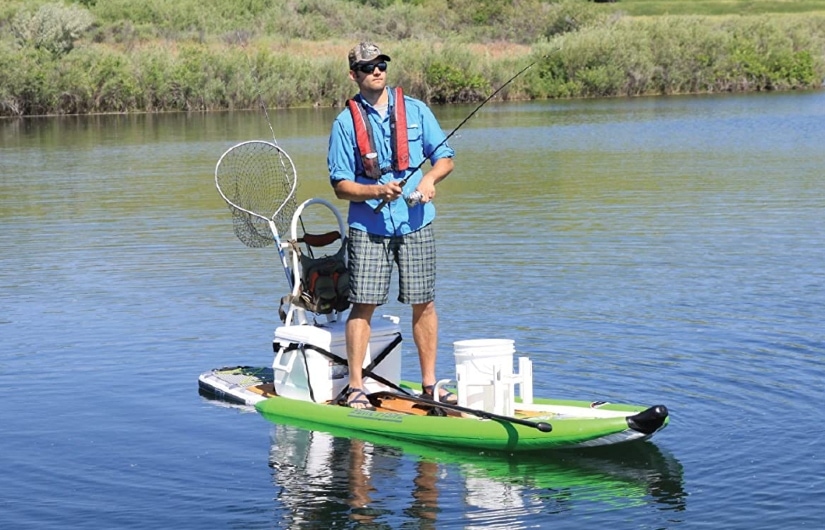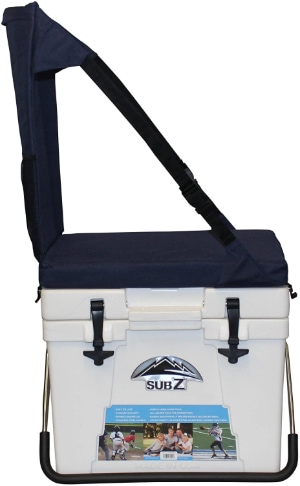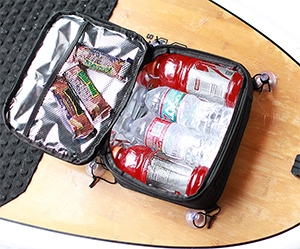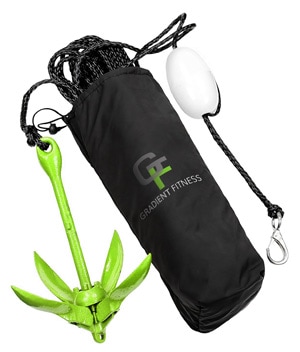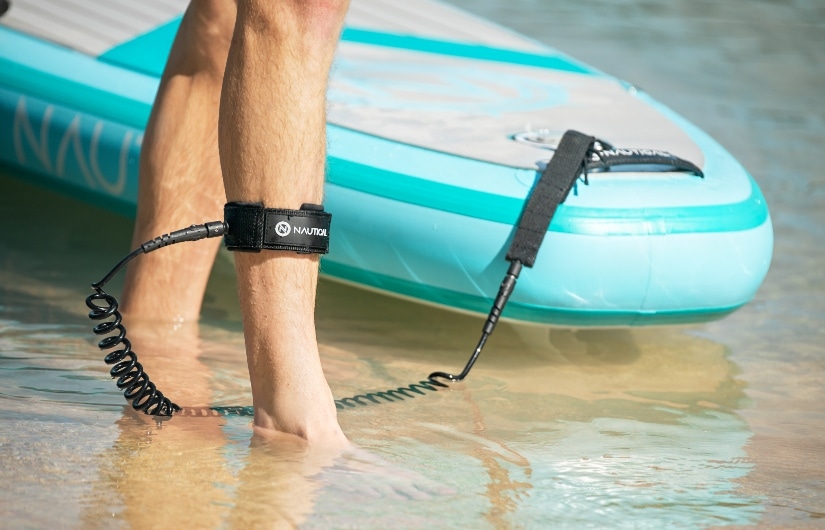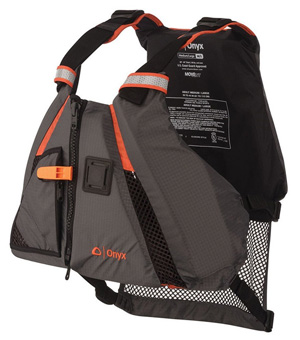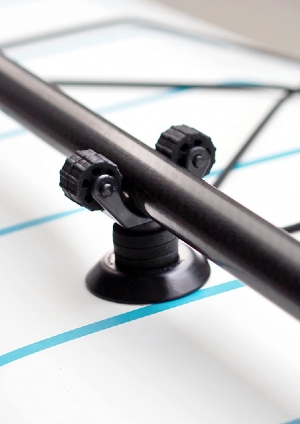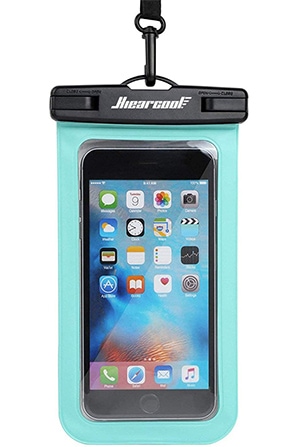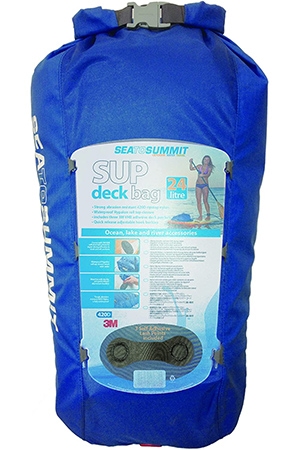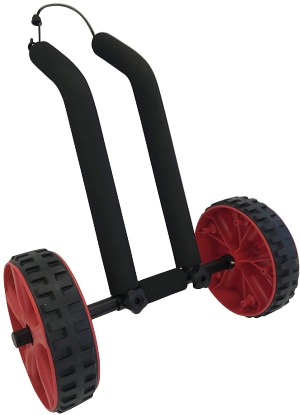One of the key benefits of SUP fishing is being able to access remote spots quietly. SUP boards are nimble and you can maneuver some really tight waterways.
While all this sounds awesome, many people cannot imagine a paddle board fishing setup. You need so much gear, where do you put it all?
Well, fishing stand up paddle boards come with gear mounts and tons of D-rings with bungee cords. With two bungee storage areas, you can secure a bag at the front and a cooler at the back. Then use the gear mounts to attach fishing rod holders.
Besides, you can DIY rig your paddle board to hold all kinds of gear.
So, what is the best SUP fishing setup?
Keep reading.
Key Takeaways
- It’s easy to get started with SUP fishing – but first, you’ll need to ensure you have the correct gear – and to choose the right paddle board.
- Rigid SUPs are faster and smoother but may be heavy and fragile, while inflatable SUPs are durable and easy to store but may be slower and need inflation.
- You also need fishing-specific accessories (like a seat, a cooler, rod holders etc). SUP fishing is all about the setup – s you’ll need to make sure you’re properly prepared – but also ensure you don’t overload your SUP with stuff!
- Safety is also very important – you should wear your PFD and leash at all times and have your phone with you; be safe, but above all, have fun
Paddle boards for SUP Fishing
Should you buy a rigid or inflatable paddle board for fishing? There’s no straightforward answer. Both would make great boards for angling.
But each one has its pros and cons.
Let’s look at them.
1. Rigid Fishing SUP Boards
These are the traditional SUP boards. They are typically made of plastic, fiberglass, or wood.
The plastic material flexes a little which means that it is more likely to survive in case of impact. Plastic paddleboards are super durable.
However, they can be heavy.
One of the reasons why people love SUPs is because they are lightweight and easy to handle. So a heavy one could be a deal-breaker for many anglers.
Fiberglass boards are lighter and perform well. But they are also stiffer. A fiberglass fishing SUP may not handle impact well. If you expect to fish in an area with rocks or other obstacles, it may not be a good idea.
There aren’t many wooden paddle boards made for SUP fishing. Their performance and durability largely depend on the quality of construction and finishing.
Generally, rigid paddleboards excel when it comes to performance. They glide smoothly and faster than the inflatables. They are ideal for anglers who want speed and impeccable tracking.
This is not to say that iSUPs perform poorly. Just that rigid boards are slightly better in this area.
2. Inflatable Fishing SUP Boards
iSUPs are mainly liked because of their ease of storage and transport. A deflated inflatable paddle board can fit pretty much anywhere. You can carry it inside your car or on a plane to wherever you are going. This is not a benefit you can enjoy with a rigid SUP.
Inflatable fishing paddle boards are also super durable. Quality ones like the Blackfin Model X paddle board are virtually indestructible. You can use them anywhere without worrying about dents or dings.
The downside is that inflating and deflating every time you have to use your paddle board is tiring. Some iSUPs will wear you out even before you begin your angling adventure.
Best SUP Fishing Setup
If you decide to use a paddle board for angling, be prepared to make a few modifications. There are two essential things that fishing SUPs don’t come with: a seat and a place to store your fish/refreshments.
Configuring your paddle board to include them is easy.
You have two options.
a. Hard Cooler as a Seat
This is killing two birds with one stone.
Instead of buying a cooler and a chair, you can save money and use a hardshell cooler as a seat.
It is a nice option for the minimalist angler or if you fear that you don’t have much space on your board.
But as you can imagine, sitting on a hard cooler all day is uncomfortable. Not to mention you won’t have somewhere to lean back when you are tired.
If you don’t mind spending a little bit more, you can get one of those coolers with a high back seat, like the Nash cooler.
It has a padded seat and high backrest for maximum comfort.
Be careful not to buy a cooler/seat that is too high. A higher center of gravity translates to less stability.
b. Cooler and Folding Chair
The most obvious downside while using a cooler as a chair is accessibility. You will be forced to stand whenever you need to get something.
So you can opt for a cooler and a folding chair instead.
The reason why I recommend a folding chair instead of the typical paddle board kayak seat is comfort and convenience.
The folding chair will have you in a raised position, which is comfortable for your legs and back. Additionally, it is easier to fish from that position.
When buying a folding chair and cooler, keep your SUP dimensions in mind. You wouldn’t want to have a seat or cooler that is too wide or too heavy.
Paddle Board Fishing Accessories
The good thing about SUP fishing is that you don’t need a lot of stuff. If you are a paddleboarder, you probably own many of these paddle board fishing accessories already.
Take a look.
1. SUP Fishing Cooler
A SUP fishing cooler is a must-have for any angler.
When you have been SUP fishing under the hot sun for hours, you will be dying to have a cold drink. You can only keep your refreshments cold in a cooler.
Besides, you will need somewhere to store your catch. And if you don’t have a seat, the cooler will double as a chair.
But it depends on the type of cooler you will buy.
A SUP cooler can either be a cooler bag or hardshell box. Cooler bags, like the SUP Now cooler, look like a typical bag. But they have insulation features. This type of cooler cannot be used as a seat.
A hardshell is a cooler box. It has amazing ice retention and you can use it as a seat.
2. SUP Fishing Rod Holders
Going paddle board fishing without rod holders is crazy. Where will you put your rods when paddling? Surely you can’t hold them yourself.
A fishing rod holder holds your rod securely, leaving your hands free to paddle or rest.
As you shop around for a rod holder, make sure you get one that will work with your rods. Even better, get a universal one like the Scotty #230 Powerlock rod holder.
A locking mechanism would also be nice. Fishing rods can be expensive and you don’t want to lose yours.
3. SUP Fishing Anchor
Can you imagine how annoying it would be if your paddle board kept drifting away when you are paddle board fishing?
SUP fishing requires patience and sometimes you will have to be at a specific spot for a while.
That is what makes a SUP fishing anchor necessary. It will keep your paddleboard in place until you are ready to move.
Paddle board anchors are small and typically weigh under 4 pounds.
Consider the type of water you fish in before getting an anchor.
If you are a saltwater angler, you will appreciate a rust-resistant anchor.
4. SUP Leash
You are not required by the USCG to wear a leash when paddle boarding.
But when you fall off your paddle board, it will not remain stationary, waiting for you to get back on. It will most likely begin to float away. If you can’t swim fast enough to get to the SUP, there’s no telling how that story will end.
In adverse situations, you may need to stay on your paddle board. It could save your life. You can’t afford to be separated from the paddle board.
So while you don’t have to wear a SUP leash, make it a personal rule to never get on the water without one.
The goal is to have fun, catch fish (if you’re lucky), and arrive back home after your SUP fishing trip in one piece.
5. SUP Fishing PFD/Life Vest
According to Federal Law, children under the age of 13 have to wear a personal flotation device, USCG-approved, at all times.
From age 13 and above, you should have a USCG-approved personal flotation device in good condition on board. (Check the PFD laws in your state).
But in an emergency, how will a life vest help you if you are not wearing it?
SUP fishing PFDs don’t have to be uncomfortable. You have so many options to choose from, including suspender and belt PFDs that won’t get in your way.
Anglers who want life jackets with storage options will have to settle for vest PFDs though.
6. Paddle Holder
Have you thought about where your paddle will be while you are SUP fishing?
You can balance it on your laps but that is not a very wise idea.
Ask any angler who has a paddle or two resting somewhere at the bottom of a lake.
Paddle holders help you put your paddle away, without worrying about it getting lost.
Then you can fish in peace.
The Vamo Yak Attack and the Paddle Port paddle holders are great examples.
The Yak Attack comes with the hook needed to attach the holder.
7. Cell Phone Waterproof Case
People go with their phones everywhere nowadays, including paddle board fishing.
There are tons of useful SUP apps and you also want to stay connected to your loved ones.
But wouldn’t it be unfortunate if your phone took a swim?
Most phones are not waterproof. So you may not be able to take a photo of your catch to show your social media buddies. And they won’t believe you without a photo :-).
It is hard to prevent your cellphone from getting wet.
But you don’t have to worry about that with a waterproof case.
The Hiearcool case is universal and will fit most smartphones.
RELATED: Should you choose a paddle board or a kayak for fishing – which is better?
8. Dry Storage Bag
Your phone is not the only thing that you wouldn’t want to get wet.
Regardless of how good of a paddler you are, you should always be prepared to tip over.
And if that happens, you want all your gear and essentials to remain undamaged.
A dry storage bag is for your credit cards, wallet, keys, and other small valuables.
In addition to keeping them dry, this bag floats when it falls into the water. So it will be easier to retrieve it.
Make sure the bag is filled with air for it to float.
9. Paddleboard Cart
Although fishing paddle boards are lightweight compared to fishing kayaks, they are still not fun to carry.
The rigid ones, especially, can be quite a challenge.
And even with an inflatable paddle board, you may want to transport it when it is inflated.
Some of these iSUPs weigh as much as 55 pounds.
Don’t forget you will also be carrying your fishing gear.
This is where a paddle board cart comes in. Paddleboard carts are simple and easy to use.
Most of them are airless so you won’t have to worry about punctures.
10. Polarized Sunglasses
These sunglasses reduce glare and greatly improve visibility.
Paddle board fishing while standing gives you a height advantage and allows you to have a better view of the water. These glasses ensure that the sun’s glare doesn’t interfere with this benefit.
Buy polarized sunglasses that are not too dark and ones that fit you well. You may have to wear them all day. They should be lightweight and comfortable.
11. Hat
Protect your face, neck, and ears from the sun by providing shade with a hat.
While you may be tempted to go for the most stylish fishing hat, prioritize comfort. The material should be breathable and it shouldn’t make you itchy.
You will also appreciate a lightweight and well-fitting hat. Try to find an adjustable one.
Rig Your Inflatable SUP for Fishing
Paddleboards made specifically for SUP fishing come with gear tracks, mounts, and lots of tie-down points.
If your paddle board doesn’t have some of these options, or they are not enough, you will be forced to do a little DIY project.
So here is how to rig your inflatable SUP for a good SUP fishing setup.
Adding Scotty Mounts to an Inflatable
Scotty mounts provide a way for you to conveniently carry gear.
a. Railblaza Ribport
The Railblaza Ribport fits fish finders, rod holders, and other paddle board fishing accessories. It is ideal if you don’t want to deal with messy glue. All you have to do is peel and stick your mount.
The Ribport has been tested on PVC (which is the most common material for making iSUPs), Hypalon, and polyethylene.
b. Scotty #341-BK Glue-On Pad
The Scotty 341 Glue-on Mount bonds very well to PVC inflatable SUPs as well as Hypalon. It comes with stainless steel fasteners and works with the Scotty 241 deck mount.
Adhesive-Mount Rod Holder
Another easy way of carrying fishing rods on your SUP is by use of an adhesive-mount rod holder, such as the Zomchain Kayak Rod Holder and Mount
The Zomchain rod holder and mount rotates 360 degrees. It has a smooth bottom that sticks perfectly to inflatable boards.
The Zomchain doesn’t come with adhesive. You have to buy it separately.
Tips for a Successful Paddle Board Fishing Trip
As you prepare for your SUP fishing trip, be guided by these two important tips.
1. Pack Light
Paddle boards are small and have lower weight limits. Don’t be carried away. Only bring what you will need.
If you exceed the set weight limit, the performance of your stand up paddle board will be affected. You will find it unstable, slow, and hard to control. And if you tip over, you stand to lose a lot more stuff.
Check out this simple SUP fishing setup.
2. Safety First
While SUP accidents are not common, they do occur. Here is how you can stay safe while paddle boarding.
- Always ensure that you wear your USCG-approved PFD and a leash.
- Let your loved ones know where you are.
- Have your phone with you so you can call for help in case of anything.
- Bring other safety essentials like a knife, whistle, headlamp, map, etc.
- If possible, don’t wander too far off on your own.
ALSO READ: 15 Tips for Stand Up Paddle Board Fishing
Conclusion
Fishing from a stand up paddle board is a unique experience. But to get the most out of it, you have to get a proper SUP fishing setup. You can choose to go with a rigid or inflatable SUP. Configure your fishing paddle board to your liking and get all the necessary accessories. However, don’t forget that the SUP has a weight limit. Lastly, adhere to all the safety precautions.
Do you have any questions or comments about SUP fishing setup? Feel free to let us know below. Happy SUP fishing!


